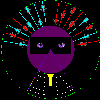BACK UP RCA TRASNMITTERS
RCA TT-10AH and RCA TT-25BH
|
|
BACK UP RCA TRASNMITTERS |
|
|
RCA TT-10AH and TT-25BH Transmitters "Alternate", "Backup" Picture about 1993 |

|
BACK UP RCA TRASNMITTERS |
|
|
Control Module the two TT-10s |
|
Control Module the two TT-10s Control outputs... |
|
"You always pass failure on the way to success."
-Mickey Rooney |
 Sensor
Sensor Sensor
Sensor Sensor
Sensor Sensor
Sensor Sensor
Sensor Sensor
Sensor Sensor
Sensor|
|
 Sensor
Sensor control
control|
Dos computer screen showing the back up transmitter in operation. Picture about 1994 |
CognizantWire Systems